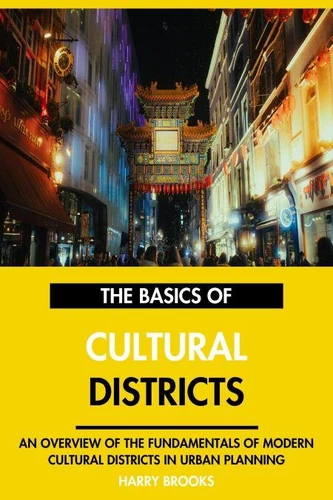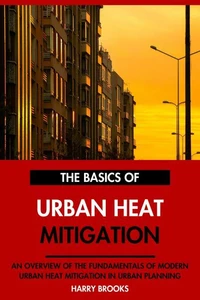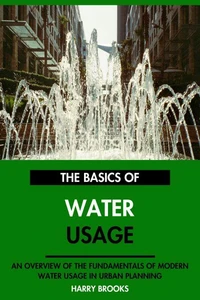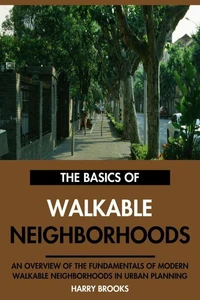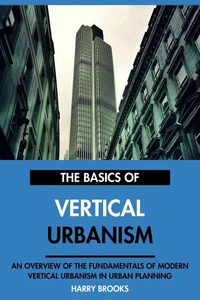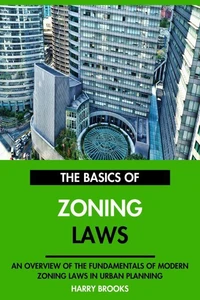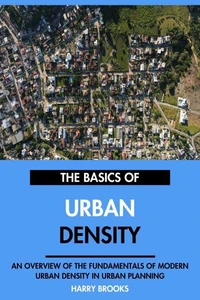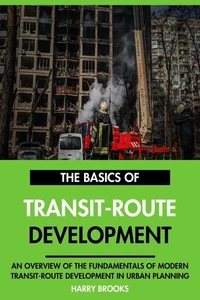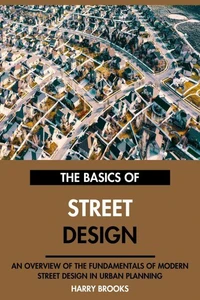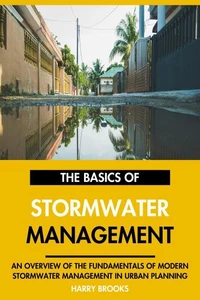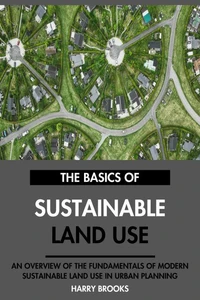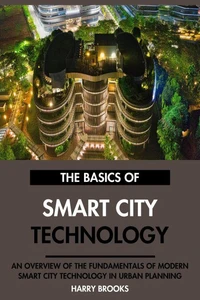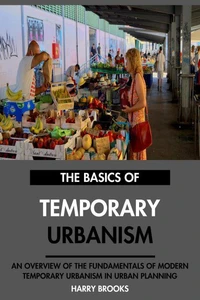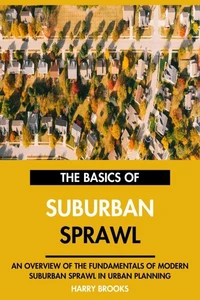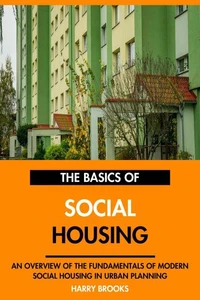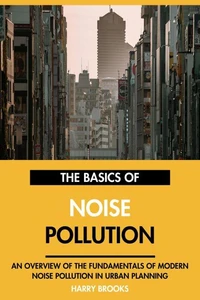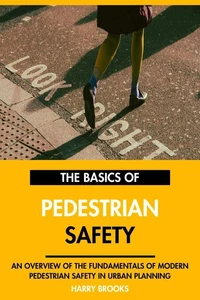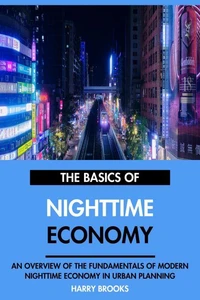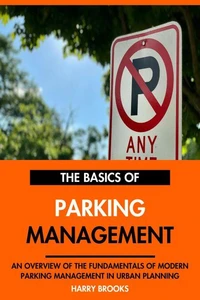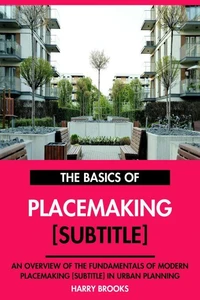Nouveauté
The Basics of Modern Cultural Districts: An Overview of the Fundamentals of Cultural Districts in Urban Planning.
Par :Formats :
Disponible dans votre compte client Decitre ou Furet du Nord dès validation de votre commande. Le format ePub protégé est :
- Compatible avec une lecture sur My Vivlio (smartphone, tablette, ordinateur)
- Compatible avec une lecture sur liseuses Vivlio
- Pour les liseuses autres que Vivlio, vous devez utiliser le logiciel Adobe Digital Edition. Non compatible avec la lecture sur les liseuses Kindle, Remarkable et Sony
- Non compatible avec un achat hors France métropolitaine
 , qui est-ce ?
, qui est-ce ?Notre partenaire de plateforme de lecture numérique où vous retrouverez l'ensemble de vos ebooks gratuitement
Pour en savoir plus sur nos ebooks, consultez notre aide en ligne ici
- FormatePub
- ISBN8231404551
- EAN9798231404551
- Date de parution11/08/2025
- Protection num.Adobe DRM
- Infos supplémentairesepub
- ÉditeurWalzone Press
Résumé
The concept of cultural districts has gained significant traction in recent years, emerging as a focal point in urban planning discussions. As cities evolve and adapt to the demands of modern life, the importance of integrating cultural elements into urban spaces has become increasingly clear. This eBook aims to explore the multifaceted nature of cultural districts, examining their role in shaping urban environments and enhancing community engagement. Cultural districts are not merely geographical areas; they represent a confluence of creativity, identity, and economic vitality.
They serve as platforms for artistic expression, cultural exchange, and social interaction, fostering a sense of belonging among residents and visitors alike. As urban planners and policymakers recognize the value of these districts, they are increasingly incorporating cultural considerations into their development strategies. In this eBook, we will delve into the fundamentals of cultural districts, exploring their historical context, design principles, and the impact they have on urban life.
We will examine case studies from various cities around the world, highlighting successful examples of cultural districts that have transformed neighborhoods and revitalized local economies. Through these explorations, readers will gain a deeper understanding of the critical role cultural districts play in shaping the urban landscape. The journey toward creating successful cultural districts is not without its challenges.
Issues such as gentrification, social equity, and the preservation of cultural heritage must be navigated thoughtfully. This eBook will address these complexities, offering insights into best practices for fostering inclusive and sustainable cultural districts that benefit all community members. As we embark on this exploration of cultural districts, it is essential to recognize the diverse perspectives and experiences that shape these spaces.
Each district is unique, reflecting the cultural heritage and aspirations of its community. By embracing this diversity, we can create vibrant urban environments that celebrate creativity and foster social connections. The following chapters will provide a comprehensive overview of cultural districts, examining their significance in urban planning and the ways they contribute to the overall vitality of cities.
We invite you to join us on this journey as we uncover the fundamental principles that underpin cultural districts and their transformative potential in urban environments.
They serve as platforms for artistic expression, cultural exchange, and social interaction, fostering a sense of belonging among residents and visitors alike. As urban planners and policymakers recognize the value of these districts, they are increasingly incorporating cultural considerations into their development strategies. In this eBook, we will delve into the fundamentals of cultural districts, exploring their historical context, design principles, and the impact they have on urban life.
We will examine case studies from various cities around the world, highlighting successful examples of cultural districts that have transformed neighborhoods and revitalized local economies. Through these explorations, readers will gain a deeper understanding of the critical role cultural districts play in shaping the urban landscape. The journey toward creating successful cultural districts is not without its challenges.
Issues such as gentrification, social equity, and the preservation of cultural heritage must be navigated thoughtfully. This eBook will address these complexities, offering insights into best practices for fostering inclusive and sustainable cultural districts that benefit all community members. As we embark on this exploration of cultural districts, it is essential to recognize the diverse perspectives and experiences that shape these spaces.
Each district is unique, reflecting the cultural heritage and aspirations of its community. By embracing this diversity, we can create vibrant urban environments that celebrate creativity and foster social connections. The following chapters will provide a comprehensive overview of cultural districts, examining their significance in urban planning and the ways they contribute to the overall vitality of cities.
We invite you to join us on this journey as we uncover the fundamental principles that underpin cultural districts and their transformative potential in urban environments.
The concept of cultural districts has gained significant traction in recent years, emerging as a focal point in urban planning discussions. As cities evolve and adapt to the demands of modern life, the importance of integrating cultural elements into urban spaces has become increasingly clear. This eBook aims to explore the multifaceted nature of cultural districts, examining their role in shaping urban environments and enhancing community engagement. Cultural districts are not merely geographical areas; they represent a confluence of creativity, identity, and economic vitality.
They serve as platforms for artistic expression, cultural exchange, and social interaction, fostering a sense of belonging among residents and visitors alike. As urban planners and policymakers recognize the value of these districts, they are increasingly incorporating cultural considerations into their development strategies. In this eBook, we will delve into the fundamentals of cultural districts, exploring their historical context, design principles, and the impact they have on urban life.
We will examine case studies from various cities around the world, highlighting successful examples of cultural districts that have transformed neighborhoods and revitalized local economies. Through these explorations, readers will gain a deeper understanding of the critical role cultural districts play in shaping the urban landscape. The journey toward creating successful cultural districts is not without its challenges.
Issues such as gentrification, social equity, and the preservation of cultural heritage must be navigated thoughtfully. This eBook will address these complexities, offering insights into best practices for fostering inclusive and sustainable cultural districts that benefit all community members. As we embark on this exploration of cultural districts, it is essential to recognize the diverse perspectives and experiences that shape these spaces.
Each district is unique, reflecting the cultural heritage and aspirations of its community. By embracing this diversity, we can create vibrant urban environments that celebrate creativity and foster social connections. The following chapters will provide a comprehensive overview of cultural districts, examining their significance in urban planning and the ways they contribute to the overall vitality of cities.
We invite you to join us on this journey as we uncover the fundamental principles that underpin cultural districts and their transformative potential in urban environments.
They serve as platforms for artistic expression, cultural exchange, and social interaction, fostering a sense of belonging among residents and visitors alike. As urban planners and policymakers recognize the value of these districts, they are increasingly incorporating cultural considerations into their development strategies. In this eBook, we will delve into the fundamentals of cultural districts, exploring their historical context, design principles, and the impact they have on urban life.
We will examine case studies from various cities around the world, highlighting successful examples of cultural districts that have transformed neighborhoods and revitalized local economies. Through these explorations, readers will gain a deeper understanding of the critical role cultural districts play in shaping the urban landscape. The journey toward creating successful cultural districts is not without its challenges.
Issues such as gentrification, social equity, and the preservation of cultural heritage must be navigated thoughtfully. This eBook will address these complexities, offering insights into best practices for fostering inclusive and sustainable cultural districts that benefit all community members. As we embark on this exploration of cultural districts, it is essential to recognize the diverse perspectives and experiences that shape these spaces.
Each district is unique, reflecting the cultural heritage and aspirations of its community. By embracing this diversity, we can create vibrant urban environments that celebrate creativity and foster social connections. The following chapters will provide a comprehensive overview of cultural districts, examining their significance in urban planning and the ways they contribute to the overall vitality of cities.
We invite you to join us on this journey as we uncover the fundamental principles that underpin cultural districts and their transformative potential in urban environments.

